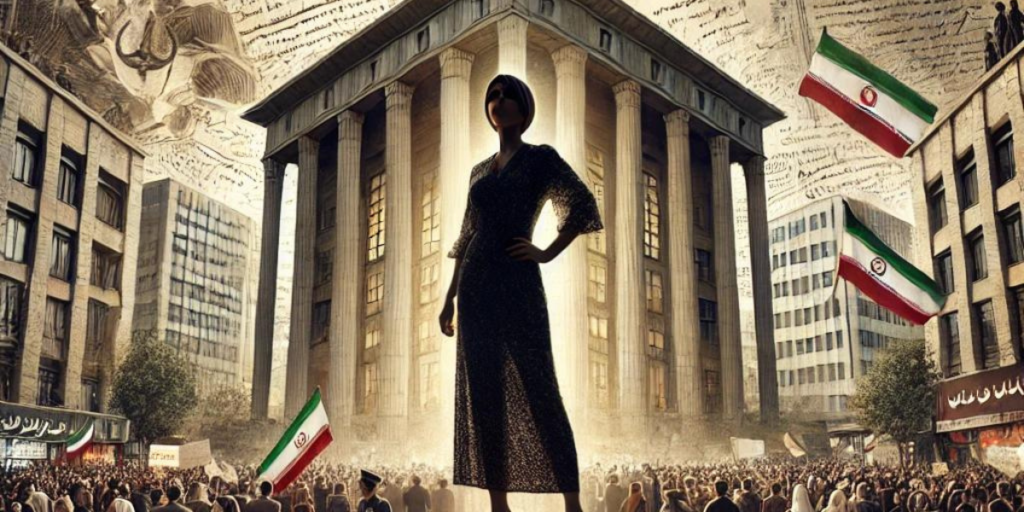In the heart of Tehran, where the complexities of law intertwine with the fabric of society, a singular case has ignited conversations and raised crucial questions about justice, accountability, and human rights. The Roya Heshmati case stands as a beacon—both illuminating the shortcomings within Iran’s legal landscape and highlighting the resilience of those who dare to challenge it. As we delve into this compelling narrative, we will explore not just the details surrounding Heshmati’s ordeal but also its far-reaching implications on governance, public trust in institutions, and future reforms. Join us as we unravel how one woman’s fight for justice is reshaping perceptions and prompting a call for change in an ever-evolving legal system.
Introduction to the Roya Heshmati Case
The tale of Roya Heshmati is one that has rippled through Tehran and beyond, shining a stark light on the complexities of Iran’s legal landscape. As a case that has captivated public attention, it raises questions about justice, accountability, and the power dynamics within government institutions. What started as an ordinary incident quickly escalated into a significant national conversation about human rights and the rule of law in Iran. The implications reach far beyond one individual; they touch upon systemic issues entrenched in Tehran’s legal framework. With global eyes now fixed on this unfolding drama, it’s essential to dissect what happened to Roya Heshmati and what her story means for everyone living under similar circumstances in Iran today.
Background of Tehran’s Legal System
Tehran’s legal system is a complex intertwining of traditional Islamic law and modern judicial practices. Rooted in Sharia, it emphasizes moral and ethical standards derived from religious texts. This foundation shapes many aspects of everyday life for its citizens.
The judiciary operates under the Supreme Leader’s authority, leading to significant influence over court decisions. Judges often have broad discretion in their rulings, which can result in inconsistencies across cases.
Public trust in the system fluctuates due to perceived biases and a lack of transparency. Many see the courts as tools for political control rather than impartial adjudicators.
Recent years have witnessed increasing calls for reform amid concerns surrounding human rights violations. Activists argue that an overhaul is crucial for ensuring justice and fairness within Tehran’s courtroom walls.
The Accusations and Trial of Roya Heshmati
Roya Heshmati’s case has stirred significant controversy. The accusations against her range from political dissent to alleged involvement in protests against the regime. These claims have drawn skepticism, raising questions about their validity.
During the trial, evidence presented was often circumstantial. Eyewitness testimonies were conflicting at best, leading many to question the integrity of the legal process. Observers noted a lack of transparency throughout proceedings.
Heshmati’s defense team argued that she was targeted for her activism rather than any legitimate crime. This perspective resonated with many who see her as a symbol of resistance against oppression.
As tensions escalated inside and outside the courtroom, public interest swelled. Media coverage highlighted not just Heshmati’s plight but also broader concerns about justice in Iran’s legal framework.
Public Outcry and International Attention
The case of Roya Heshmati sparked significant public outcry both within Iran and around the world. Social media platforms became a rallying point for activists, amplifying calls for justice. Hashtags like #JusticeForRoya gained traction, drawing attention to her plight.
Protests erupted in major cities, with citizens demanding accountability from Tehran’s legal authorities. Demonstrators carried banners highlighting the perceived injustices of her trial, calling it emblematic of broader systemic failures.
International news outlets picked up the story, showcasing videos and testimonials that highlighted growing concerns over human rights violations in Iran. The global community watched closely as events unfolded.
Prominent figures and organizations stepped forward to voice their support for Heshmati’s cause. This increasing attention pressured Iranian officials to respond more transparently about the judicial process involved in her case.
Implications for Tehran’s Legal System
The Roya Heshmati case has thrown the spotlight on Tehran’s legal system, raising questions about its fairness and transparency. As public interest grows, many are now scrutinizing how cases like hers are handled.
This situation reveals deep-seated issues within the judicial framework. Critics argue that political motivations often overshadow justice, leading to biased outcomes. The lack of due process in her trial highlights systemic flaws that need urgent addressing.
Legal experts believe this case could spark significant reforms if enough pressure is applied. An overhaul may be necessary to ensure accountability for law enforcement agencies such as roya salahian police.
Furthermore, the international community is watching closely. Their reactions could influence diplomatic relations and drive change within Iran’s legal landscape.
The implications extend beyond just one case; they resonate with countless others facing similar struggles in a flawed system.
Reactions from Human Rights Organizations
Human rights organizations have been vocal about the Roya Heshmati case. Their reactions highlight deep concerns regarding fairness and justice in Tehran’s legal proceedings.
Amnesty International characterized the trial as politically motivated, calling for an immediate review of the accusations against Heshmati. They argue that her rights were compromised throughout the process.
Similarly, Human Rights Watch condemned what they labelled as a mockery of justice. They emphasize that due process was disregarded, raising alarms over potential human rights violations.
Activists worldwide are amplifying these voices through social media campaigns and open letters. The global community is increasingly demanding accountability from Iranian authorities.
These organizations see this case as a pivotal moment to address broader systemic issues within Iran’s judicial framework. Their ongoing advocacy aims to illuminate injustices faced by many others who find themselves entangled in similar circumstances.
Efforts for Justice: Petitions and Protests
In the wake of Roya Heshmati’s trial, a wave of activism has surged across social media and streets. Citizens are rallying together, demanding accountability from Tehran’s legal system.
Petitions have circulated globally, garnering thousands of signatures in support of justice for Heshmati. Activists highlight the need for transparency and fairness within the judiciary. These efforts aim to shine a light on systemic issues that plague Iran’s legal framework.
Protests erupt intermittently, with demonstrators holding placards bearing her name and chanting slogans against injustice. This grassroots movement serves as a platform for voices often silenced by oppressive regimes.
The unity among diverse groups showcases an unwavering determination to ensure that human rights are upheld. Each signature and each protest adds momentum to a cause many refuse to ignore in their pursuit of justice.
Effects on Society and Government Perception
The Roya Heshmati case has ignited a spark in Iranian society. People are increasingly questioning the fairness of their legal system. The outcry surrounding this case reflects a growing disillusionment with governmental authority.
Public discussions have shifted to the implications of such trials on everyday lives. Citizens now grapple with fears about arbitrary arrests and lack of due process. This climate breeds skepticism toward law enforcement agencies, including the roya salahian police.
Moreover, social media platforms buzz with debates regarding justice and human rights. Activists call for transparency and accountability from those in power.
Government perception is undergoing scrutiny as citizens demand answers and reforms. People want assurance that their voices matter, that their rights will be respected under the law—an essential shift for any society aiming for progress.
Conclusion: Future Steps for Justice in Iran
The Roya Heshmati case has sparked a significant movement for justice within Iran. As awareness of her situation grows, the calls for reform in Tehran’s legal system have intensified. Activists and ordinary citizens alike are pushing back against injustices that have long been overlooked.
Efforts to bring attention to this case continue to flourish, with numerous petitions circulating globally. Social media platforms serve as powerful tools for advocacy, amplifying voices demanding accountability and transparency from authorities.
Human rights organizations remain vigilant, closely monitoring developments related to Heshmati’s trial and its aftermath. Their involvement plays a crucial role in ensuring that international pressure remains on Iranian officials.
As society grapples with these events, discussions surrounding the need for change gain momentum. The public is increasingly aware of systemic flaws within the judiciary and law enforcement branches. This awareness could pave the way for reforms aimed at establishing fairer practices in handling cases like that of Roya Heshmati.
The road ahead is filled with challenges but also opportunities for meaningful change. The collective efforts of those advocating for justice can lead to a more equitable system where human rights are respected and upheld consistently across Iran’s legal landscape.






